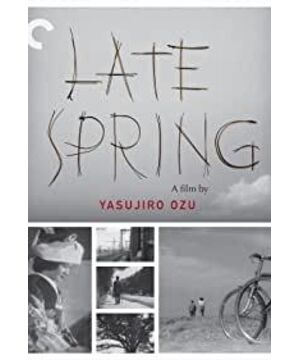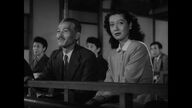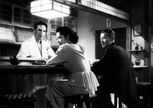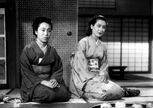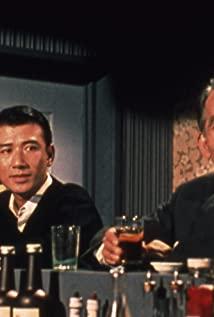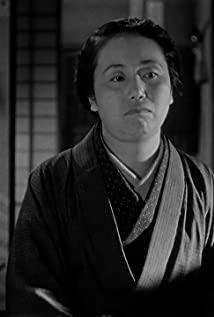Turn off the lights and dismantle the movie, read only the classics
Yasujiro Ozu 's film style is very unique, which is obviously different from other Japanese directors of the same period. Ozu and Akira Kurosawa have always been side by side, representing two different directions of the golden age of Japanese cinema.
Ozu's films are numerous and their styles are relatively uniform. His main themes are family , especially some of Ozu's films after World War II. Today I will talk about his representative work "Late Spring" in the middle and late period .
Turn off the lights special, please do not reprint
Text/Ge Ying's addiction to cleanliness is also a pursuit
"Late Spring" is a very good example of some of the stylistic elements and important features of Ozu's films .
A slow narrative rhythm
Ozu's films give the audience a sense of slow rhythm , mainly because he does not output very powerful story information in a unit of time, so in his films, there are a lot of empty mirrors , and he often shows that he is detached from the main plot of the film. some scenes.
For example, in "Late Spring", the opening is a tea ceremony performance , the purpose is to let everyone calm down and gradually enter into his rhythm.
In addition, in the film, there is a Noh performance (*Noh: a traditional Japanese singing and dancing performance). The Noh performance was very long. In order to film the Noh performance relatively completely, Ozu specially invited a well-known theater company and chose an important theater.
In terms of documentary value , "Late Spring" has preserved that performance theater very well for us today. Now that performance location is gone, and that group of outstanding Noh actors are no longer there.
2. The viewpoint of Yasujiro Ozu
The so-called Ozu Yasujiro's camera position and Ozu Yasujiro's point of view refer to the camera taking a low position to shoot people upwards .
This point of view of caring for the characters later became his habitual way of dealing with the dialogue of tatami characters . We can see this kind of viewpoint in many scenes in "Late Spring".
For example, in the tea ceremony scene at the beginning of the film, Ozu used this point of view to shoot these women.
Many people say that this camera position is used to make the audience a member of this group of characters. I think a more reasonable inference is that this angle of sight better presents a state of respect for the characters .
What did Ozu himself say about this tatami perspective? He said that at the scene, due to the different angles of the people to be photographed, after flipping the camera , he often found that the tatami was full of wires.
In this case, it is better to tilt the nose slightly, so that many wires on the floor can not be seen .
This tricky method was used systematically , no longer just to save labor, but gradually became a meaningful method of shooting , which became one of Ozu's hallmarks.
3. The secret design of the boring director
In the film "Late Spring", Ozu has many secret designs. In present words, he is a boring director .
To give the simplest example, my father's first appearance was shortly after the film's opening. He and his assistant were doing a job at home, and they were writing an introduction to an economist whose name was Lister .
Ozu designed a dialogue for them
Father: Did you find it? Assistant: Found it, here, Friedrich Lister, you're right, no Z, LIST. Father: I think so too, Liszt is a musician. Assistant: 1811-1886.
From the first sentence spoken by the father and the assistant , we can know that the father once reminded his assistant that this Liszt is not that Liszt .
The teacher had already told him, but he still got it wrong, and he posted the date of birth of the musician Liszt to The Economist. When this assistant appeared for the first time, Ozu told the audience very secretly that he was a self-righteous person and often self-defeating.
Although the assistant is a minor character, in "Late Spring", he once became the family's son-in-law candidate .
The assistant and his daughter had a seaside conversation in the back, and they talked about some topics such as jealousy, cutting radishes, etc... He wanted to enter this family very much, and wanted the teacher's daughter to marry him .
He declared that he had a fiancée and was about to get married. Through a concert ticket, the heroine was invited to watch the concert.
He wanted to arouse the jealousy of the heroine , but the heroine did not pick up on him.
He was anxious to develop a relationship with the heroine, so he played his own cleverness, but it was self-defeating, and he ended up watching the concert by himself.
Ozu especially likes to conceal this very important but very obscure plot in the film. This is Ozu's important style.
Fourth, the cleanliness of Ozu
Ozu is a director who is obsessed with cleanliness , especially on set, and likes to be organized. Many directors pat their butts and leave after filming.
But Ozu's crew is completely restored after filming, and you can't find even a scrap of paper on the scene .
But I think that cleanliness refers more to his creative concept .
The filming time of "Late Spring" was just after World War II , but in this film, flat streets, clean shop windows, new clothes and buildings... You ca n't tell that Japan has just experienced the defeat of World War II.
Imamura Shohei , who used to be Ozu's assistant director , hated Ozu very much. He said that Ozu ignored reality .
Interestingly, Shohei Imamura's film theme is precisely what Ozu dislikes the most. The chaos, cruelty, and ugliness of Japan all appear in Imamura's films.
Ozu preserves a traditional and beautiful Japanese society for today's audience , but in a way that's also Ozu's own paradise .
I always feel that the reason why Ozu created such a space on the screen is because of his own spiritual needs. During World War II, he came to China as a soldier , killed people, and released poisonous gas. I believe his heart must be suffered a huge shock .
On the left is Ozu, this photo was taken in January 1938
It is a very important question how a man will live his life after the cruelest thing he has seen.
So his movie space has become the peach blossom garden of his soul, and he just wants to create those beautiful and kind things.
So, you say he is fake, you say he is obsessed with cleanliness, but I think this is his pursuit .
Still want to learn more about the techniques and gossip of the film masters? Welcome to Himalaya to search for " Turn off the lights and dismantle movies" , and subscribe to "Ge Ying Point Movies, World Movie History TOP 50 Celebrity Legends" . The dry goods are constant, and there are a lot of materials~
On August 5th, we will see you at the simultaneous commentary of "Diet and Men and Women"!
View more about Late Spring reviews


